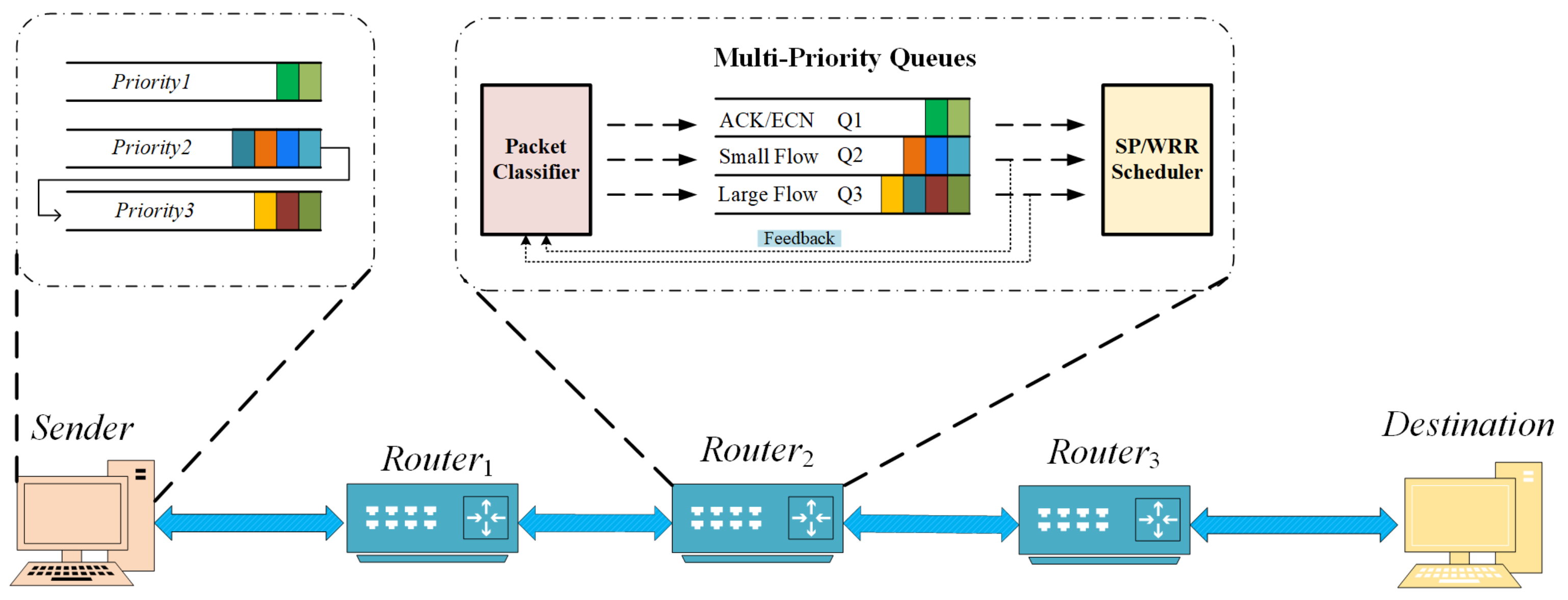Switch buffers play a crucial role in network performance. They manage data flow, ensuring smooth and efficient communication.
But how exactly do they impact the overall network speed and reliability? Switch buffers act as temporary storage for data packets. When network traffic increases, buffers prevent data loss by holding packets until they can be processed. This helps maintain a steady data flow, even during heavy usage.
Without adequate buffer space, networks can experience packet loss or delays, affecting performance. Understanding how switch buffers work is essential for optimizing network efficiency. In this post, we’ll explore their role in detail, explaining how they influence both speed and reliability. By grasping these concepts, you can better manage and improve network systems. Stay tuned as we dive deeper into the world of switch buffers.
Switch Buffer Basics
Switch buffers play a crucial role in network performance. They temporarily store data packets in a network switch. This helps manage data flow efficiently. Understanding switch buffers can enhance network reliability. It ensures data packets are not lost during transmission. Let’s explore the basic functions of switch buffers.
Purpose Of Buffers
Buffers prevent data loss by holding packets temporarily. They manage traffic congestion within a network. Buffers ensure smooth data flow even during peak times. They help prevent packet drop when network traffic is high. This maintains data integrity and smoothens overall network performance.
Types Of Buffers
There are different types of switch buffers. Static buffers allocate a fixed amount of memory. They are predictable but less flexible. Dynamic buffers adapt to traffic conditions. They allocate memory as needed. This flexibility helps in varying network loads. Both types have their own advantages and use cases.

Credit: www.mdpi.com
Impact On Data Traffic
Switch buffers play a crucial role in network performance. They significantly impact data traffic flow. Buffers temporarily hold data packets during transmission. This ensures smooth data flow without congestion. Understanding their impact on data traffic is essential for network optimization.
Handling Data Bursts
Data bursts can overwhelm a network. They occur when multiple data packets arrive simultaneously. Switch buffers manage these bursts efficiently. They store excess packets until the network can process them. This prevents packet loss during high traffic periods.
Reducing Packet Loss
Packet loss disrupts network performance. It occurs when data packets fail to reach their destination. Switch buffers help reduce packet loss. They store packets when network paths are busy. This ensures data packets are delivered successfully. Lower packet loss leads to better network reliability.
Buffer Size Considerations
Understanding buffer size is crucial to optimizing network performance. Too small, and you risk packet loss and congestion. Too large, and you may face increased latency. Let’s dive into the key aspects of determining the ideal buffer size.
Optimal Size Determination
Finding the right buffer size is a balancing act. A buffer that’s too small won’t handle traffic spikes, leading to packet loss. On the other hand, an overly large buffer can introduce latency.
Consider your network’s typical traffic patterns. Do you experience frequent bursts of data? Or is your traffic more consistent? Understanding these patterns can help you tailor the buffer size to your needs.
Think about the types of applications running on your network. Real-time applications like VoIP and video conferencing require low latency. They benefit from smaller buffers.
In contrast, applications like file transfers can handle higher latency. These might benefit from larger buffers. Adjusting buffer sizes based on application requirements ensures optimal performance.
Trade-offs In Buffer Sizing
Every decision on buffer size comes with trade-offs. A larger buffer can store more packets, reducing the chance of packet loss. But it can also cause more delay, impacting real-time applications.
Smaller buffers might lead to packet loss during high traffic periods. However, they maintain lower latency, which is critical for real-time communication. It’s a trade-off between handling volume and maintaining speed.
Consider the hardware limitations as well. Some devices might not support very large buffers. Always check your hardware specifications before making changes.
It’s important to test different buffer sizes in your specific environment. What works for one network might not work for another. Experiment and monitor the performance to find the sweet spot.
Have you experienced network issues that you couldn’t pinpoint? Sometimes, tweaking the buffer size can make a significant difference. It’s a simple yet effective strategy that you can implement quickly.
Think about your network’s unique needs and the applications you run. Making informed decisions about buffer sizes can dramatically improve your network’s performance.

Credit: www.youtube.com
Latency And Throughput
In networking, latency and throughput are crucial metrics. They determine the performance and efficiency of data transfer. Latency refers to the delay before data begins to transfer. Throughput measures the amount of data transferred in a given time. Both are influenced by switch buffers.
Buffer Influence On Latency
Switch buffers hold data packets during congestion. This process impacts latency. A larger buffer can reduce immediate packet loss. But, it might increase latency if overloaded. Buffers need careful management. The goal is to balance latency and packet delivery.
Buffers can temporarily store packets. This minimizes the time packets wait. But, too much buffering causes delay. It’s called bufferbloat. Bufferbloat increases latency. This affects real-time applications like video calls.
Throughput Enhancements
Buffers play a key role in throughput. They help manage data flow. Properly sized buffers improve throughput. They ensure continuous data transfer. This results in efficient network performance.
Buffers help maximize link utilization. They prevent packet drops during congestion. This maintains consistent throughput. But, if buffers are too small, packets drop. Small buffers can limit throughput.
Buffer Management Techniques
Switch buffers play a crucial role in network performance by managing data flow and preventing congestion. Efficient buffer management ensures smooth data transmission, reducing latency and packet loss. Properly configured buffers help maintain optimal network speed and reliability, enhancing overall user experience.
Buffer management techniques play a crucial role in network performance. These techniques determine how data is temporarily stored and processed in network switches. With the right management strategy, you can significantly reduce latency and packet loss, ensuring smooth data flow. Let’s explore some effective buffer management techniques that can enhance your network’s efficiency.Dynamic Buffer Allocation
Dynamic buffer allocation adjusts the buffer size based on current network demands. Imagine your network as a busy highway. During rush hour, more lanes open up to accommodate the traffic. Similarly, dynamic buffer allocation increases buffer space when data flow is heavy and reduces it during lighter periods.This adaptability helps prevent congestion and maximizes throughput. Have you ever noticed how some days your internet seems to lag? Dynamic buffer allocation can be the difference between a sluggish and a responsive network.Quality Of Service (qos)
Quality of Service prioritizes certain types of data packets over others. It’s like giving VIP access to important guests at an event. If you’re streaming a video, QoS ensures that video data gets priority over less critical data like file downloads.This technique is essential for applications requiring real-time data transmission, such as VoIP calls or online gaming. Imagine playing your favorite online game without interruptions. QoS makes sure your gameplay isn’t affected by background downloads or other less urgent tasks.These techniques aren’t just theoretical concepts; they can be practically applied to enhance your network’s performance. Have you experimented with these in your network setup? If not, it might be time to consider how these buffer management strategies can help optimize your system.Network Congestion Control
Network congestion occurs when data packets overload the network. This leads to slowdowns and reduced performance. Effective congestion control is essential to maintaining network efficiency. Switch buffers play a crucial role in managing this congestion.
Preventing Congestion
Switch buffers store data temporarily during high traffic. This prevents packet loss. They help manage the flow of data smoothly. An efficient buffer can reduce network congestion significantly. It acts as a buffer zone for incoming data.
Proper buffer management avoids overloading the network. It ensures data moves quickly and efficiently. This maintains optimal network performance. Regular monitoring helps in preventing congestion before it starts.
Adaptive Buffering Strategies
Adaptive buffering adjusts to changing network conditions. It dynamically allocates buffer space. This method helps in handling varying data loads. By adapting, networks can better manage unexpected traffic spikes.
Adaptive buffering ensures efficient data flow. It minimizes packet delays and losses. This strategy enhances overall network performance. Adjustments are based on real-time data flow analysis.
Real-world Applications
Switch buffers play a crucial role in network performance. They help manage data flow, preventing congestion. Their impact can be seen in various real-world settings. Let’s explore their application in enterprise networks and data centers.
Enterprise Networks
Enterprise networks rely heavily on efficient data transmission. Switch buffers help by storing data temporarily. They ensure smooth data flow across network devices. This minimizes packet loss and enhances communication efficiency. Employees experience faster access to shared resources. This boosts productivity and reduces downtime.
Switch buffers also support high-quality video conferencing. They maintain stable connections, ensuring seamless communication. Even with heavy network traffic, employees can collaborate effectively. This is crucial for businesses with remote teams or multiple branches.
Data Centers
Data centers handle massive amounts of data daily. Switch buffers are vital for managing this data flow. They prevent bottlenecks, ensuring fast data processing. This is essential for cloud services and virtual environments.
Efficient switch buffers improve server performance. They enable quick access to stored information. This benefits companies relying on real-time data analysis. Faster data retrieval leads to better decision-making.
Switch buffers also enhance network reliability. They reduce the risk of data loss during peak usage. This ensures continuous service availability. An essential factor for businesses with online platforms.
Future Trends
The future of switch buffers in network performance is promising. Technological advancements continue to shape how networks manage data flow. Understanding these trends is crucial for optimizing network efficiency.
Advancements In Buffer Technology
Buffer technology is evolving rapidly. Developers focus on increasing buffer capacity. Improved algorithms enhance data storage and retrieval speeds. Reduced latency helps maintain smooth network operations.
Energy-efficient buffers are gaining attention. They consume less power while maintaining performance. These innovations contribute to sustainable networking solutions.
Impact Of Emerging Technologies
Emerging technologies influence buffer performance significantly. Artificial intelligence aids in predicting network traffic patterns. AI-driven solutions adjust buffer sizes dynamically.
Internet of Things (IoT) expands network demands. More devices require efficient data handling. Buffers play a key role in managing this data influx.
5G technology introduces higher data speeds. Buffers must adapt to handle increased throughput. Improved designs ensure networks stay reliable and fast.

Credit: www.chegg.com
Frequently Asked Questions
How Do Switch Buffers Affect Performance?
Switch buffers enhance performance by reducing latency and managing data flow efficiently. They prevent packet loss and congestion.
How Do Switch Buffers Affect Network Performance In Quizlet?
Switch buffers temporarily store data during transmission. They help manage data flow, reducing packet loss and delays. Efficient switch buffers enhance network performance, ensuring smooth data transfer and improved Quizlet experience. Proper buffer management prevents congestion and maintains high-speed connectivity.
What Does A Switch Buffer Do?
A switch buffer temporarily stores data packets during network traffic congestion. It helps manage data flow efficiently. By preventing packet loss and ensuring smooth transmission, it improves overall network performance. This mechanism is crucial for maintaining high-speed data transfers and optimizing network resources in busy environments.
What Is The Purpose Of Frame Buffers On A Switch?
Frame buffers on a switch temporarily store data packets. They prevent data loss during high traffic. This ensures smooth, efficient network performance.
Conclusion
Switch buffers play a crucial role in network performance. They help manage data flow efficiently. Proper buffer size reduces latency and packet loss. This results in smoother and faster network operations. Optimal buffer settings are essential for high-performance networks. Regular monitoring and adjustments are key.
Understanding switch buffers improves network reliability. It ensures better user experience and maximizes productivity.










